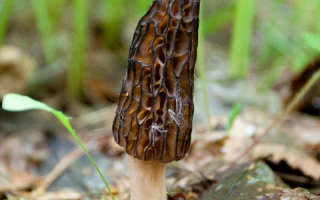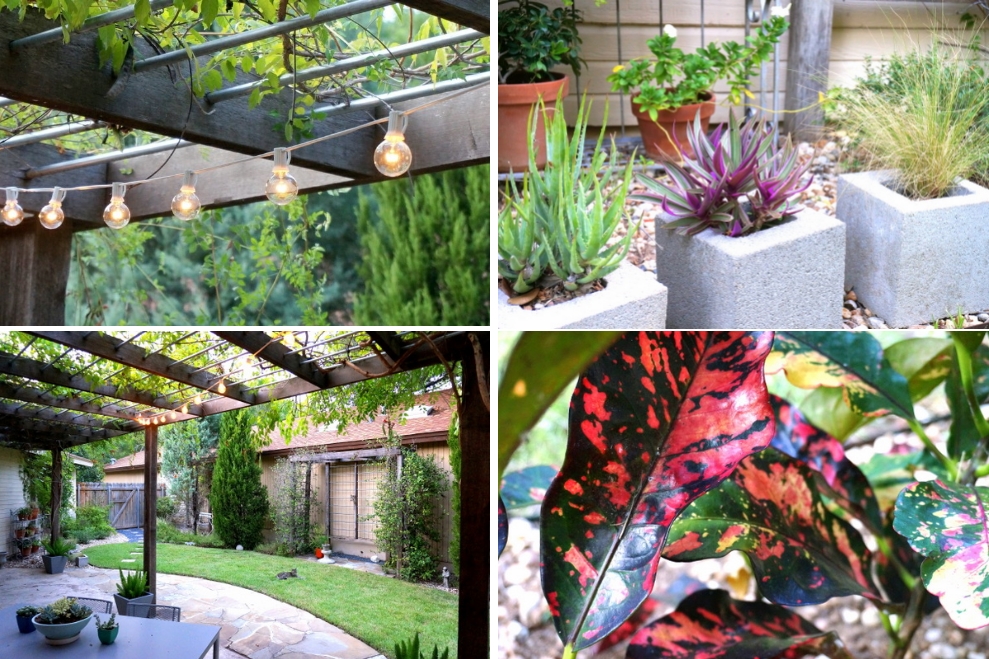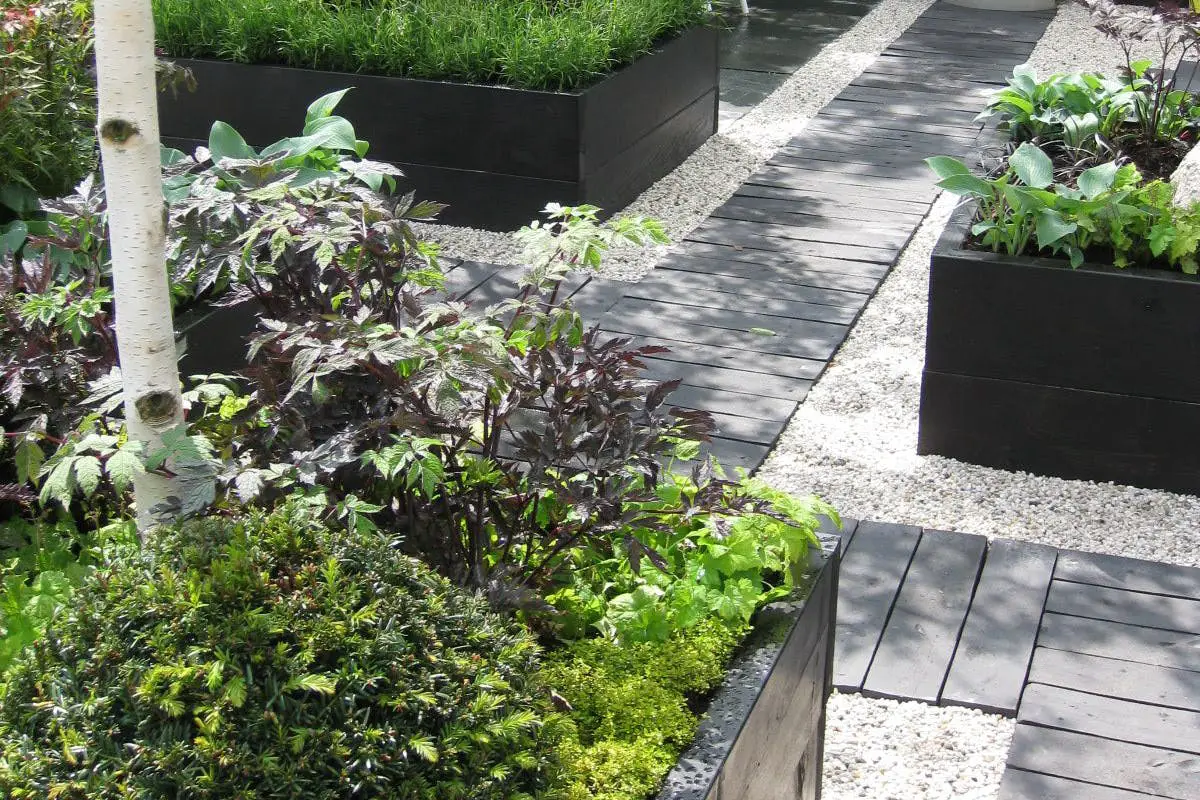Boletus – a conditionally edible mushroom that is found quite rarely in the forests. It is characterized by a characteristic shape and color of the hat. In order not to cause harm to health from the mushroom, it must be properly prepared and subjected to a previous exposure to heat.
Where do tall porcini mushrooms grow?
Tall porcini mushrooms appear from April to May. Sometimes they are found in June. This mushroom is quite rare, grows singly and does not form large groups. Therefore, they are collected in small quantities.
The boletus prefers coniferous and deciduous forests with high humidity. They can be found in clearings and forest edges overgrown with grass. Sometimes it also grows in gardens and kitchen gardens, where suitable conditions are created: fertile soil, warmth and moisture. This fungus is also common in mountainous regions.
What do porcini mushrooms look like
The cep is characterized by an unusual hat. It has a conical shape and distinct cells. Externally, the hat is reminiscent of stretched honeycombs. The cell edges stand out well against the overall background. The hat is 4 to 10 cm high and 3 to 5 cm wide.
The cells on the hat are delimited by narrow vertical partitions. They are olive green in colour. The green-brown inner part of the cells turns brown and black as they grow. The older the mushroom is, the more intense its coloring becomes.
Attention! The porcini mushroom differs from other varieties in its larger size and darker color.
The diameter of the stem corresponds to the size of the hat. Its height is from 5 to 15 cm. The thickness is about 3 to 4 cm. The stem has a whitish hue, in adult specimens it turns yellow. The spore powder is white or beige in color and elliptical in shape.
Can you eat the tall master mushroom
The tall master mushroom belongs to the category of conditionally edible mushrooms. It is consumed only after prior processing. The mass is boiled in salted water to remove harmful substances. Dangerous toxins that cause poisoning get into the liquid. Therefore, the resulting broth is necessarily drained and not eaten.
Precautions must be observed when consuming. In addition to heat treatment, it is important to comply with the consumption levels, according to which an adult person can eat no more than 200 g of mushroom mass per day. The product is not recommended for children under the age of 14, pregnant women and nursing mothers.
Such a fungus is considered to be difficult to digest food that is difficult to digest. In the case of chronic diseases and digestive problems, a doctor is first consulted.
The taste of the chanterelle is high
Chanterelles are considered a delicacy. In European countries they are served in restaurants. The flesh of these mushrooms is tender and breaks easily. After heat treatment, the product acquires a piquant mushroom aroma, which improves the taste of soups, sauces, side dishes and other dishes.
Benefits and harm to the body
The mass of butter mushrooms is rich in vitamins, amino acids and minerals. It has been used since ancient times to treat farsightedness, nearsightedness and clouding of the lens. Preparations to combat cataracts are made from the product. Extracts from the fruiting bodies of the mushroom help with rheumatism and inflammatory processes.
If consumed in excess, the product causes weakness, vomiting, nausea and stomach pain. In this case you should consult a doctor. First aid is given to the victim: activated charcoal is given, warm drinks are given and the stomach is washed.
False doubles of tall boletus
The tall boletus has characteristic features that distinguish it from other mushrooms. In nature, however, there are also its doubles. Outwardly, they resemble tall boletus, but have some differences.
The main doubles of the tall boletus:
- The mutabilis. He differs in a brown hat, which has a round shape and numerous folds. Its stem is white, gray or yellowish. The flesh of the mushroom is whitish and breaks easily. The main difference to the porcini mushrooms is the irregular shape and the distinctive mushroom smell. Strong toxins are contained in mutabilis, which are not destroyed by cooking. For this reason, it is not recommended to consume them.
- Lorchel. Has an irregularly shaped fruiting body. The cap of this mushroom has numerous beige lamellae. The stem is white, up to 9 cm high and up to 3 cm thick, with distinct ribs. This species is found in both America and Eurasia. The doppelganger belongs to the category of conditionally edible mushrooms. It is used as food after cooking.
- Rainbow mushroom. A mushroom up to 20 cm high. Adult specimens have a long stalk with a bell-shaped cap. There is a disk with a hole at the top. The cap has a porous surface covered in slime. The color is dark olive green. Only young rainbow mushrooms are used as food. Ripe mushrooms have an unpleasant musty smell.
- laburnum mushroom. The mushroom belongs to the conditionally edible category. Several sources point to its toxic properties. An individual reaction is possible: intoxication and allergy. The mushroom is characterized by a high stalk, reaching a length of 10 cm. His hat resembles a cap, its edges are free. The coloring is brown or yellowish.
Rules for collecting porcini mushrooms
Porcini mushrooms are collected in spring. The mushrooms hide along the paths, on felling trees and at fire sites. Their growth period is 2 months. If spring gets hot, then the collection begins as early as April.
Young mushrooms are selected that do not have any rotten or dry spots. They have a white or tan stem and a brown hat. With age, the surface darkens. Brown-hatted hats are not suitable for consumption.
The porcini is carefully cut off with a knife at the bottom. It is not recommended to tear it by the stalk: this will lead to damage to the mycelium. Tall boletus should be sought in places far from roads, factories and industrial zones. The fruit bodies absorb radionuclides and heavy metals.
Use
Eating porcini mushrooms requires prior processing. They are cleaned of forest debris and rinsed with water. Then water is poured into a saucepan, add a little salt and put on the stove. When the liquid boils, the mushroom mass is boiled in it and simmer over low heat for 10-15 minutes. Harmful toxins are released from the fruiting bodies, which can cause poisoning.
The cooked mass can then be placed in the freezer. Porcini mushrooms are easy to store even in dried form: they shrink and become lighter. When exposed to moisture, the meat recovers and retains its properties.
Important! Dried porcini mushrooms should not be stored for more than 20 days. Freezing can extend this period to one year.
Smorchki are prepared for various dishes. They go well with meat, chicken, potatoes and other vegetables. The product is added in soups, side dishes, main dishes. Sauces can be fried, stewed and boiled.
Graduation
The high smorchok is a rare mushroom from the conditionally edible category. It is collected at the edges of forests, near felled trees and roadsides. The product is consumed after thermal processing to remove harmful toxins.














